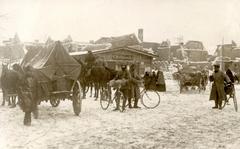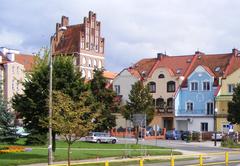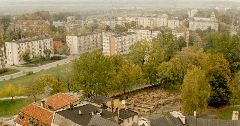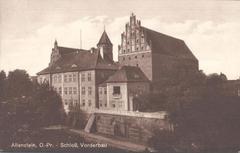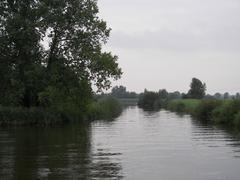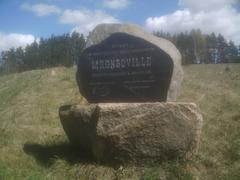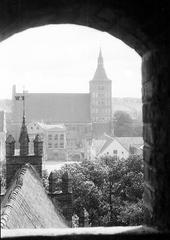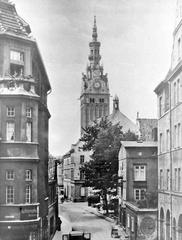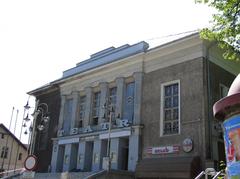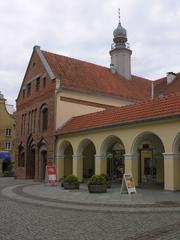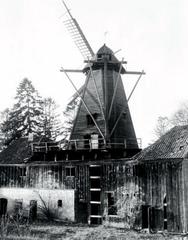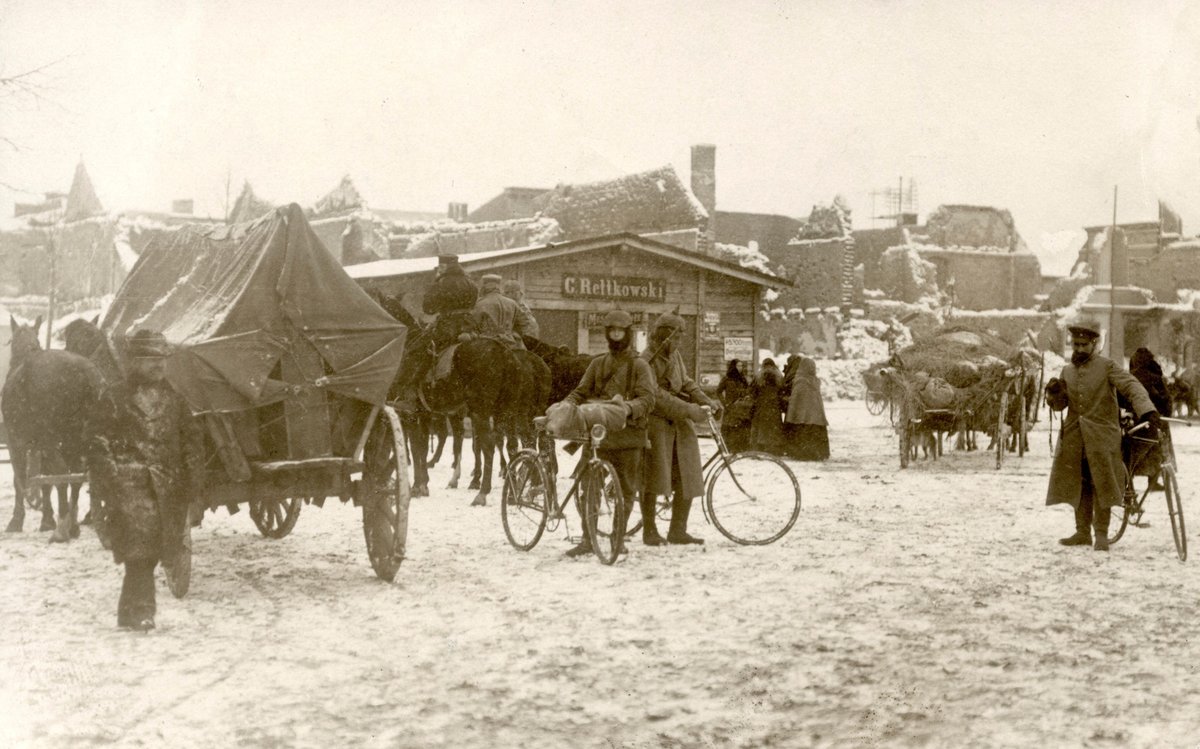
Visiting Działdowo: Comprehensive Guide to Historical Sites, Visiting Hours, Tickets, and Travel Tips
Date: 14/06/2025
Introduction
Działdowo, situated in the southern part of Poland’s picturesque Warmian-Masurian Voivodeship, offers travelers a captivating journey through centuries of history, multicultural traditions, and natural beauty. Established in the early 14th century by the Teutonic Knights as a fortified stronghold, Działdowo (formerly Soldau) has played a strategic role in the region, serving as a witness to major historical events and cultural shifts. Today, visitors can explore medieval landmarks, poignant World War II memorials, and vibrant local traditions—all set against a backdrop of scenic parks and lakes.
This guide provides essential information on visiting hours, ticketing, accessibility, transportation, and practical tips for exploring Działdowo’s historical sites and surrounding attractions. Whether your interests lie in medieval architecture, historical reflection, or outdoor recreation, you’ll find everything needed to plan a memorable visit. For the most current details on events and tours, consult resources such as the Działdowo Museum, the town’s official website, Wikipedia, and travel portals like Polska Kultura.
Table of Contents
- Historical Overview: Działdowo’s Medieval Roots and Strategic Importance
- Cultural Heritage and Multicultural Legacy
- World War II and the Soldau Concentration Camp
- Architectural and Archaeological Highlights
- Local Traditions, Cuisine, and Cultural Events
- Visiting Hours, Ticket Information, and Accessibility
- Getting to Działdowo: Transportation and Local Travel
- Practical Visitor Tips
- Frequently Asked Questions (FAQ)
- Visuals, Maps, and Interactive Resources
- Summary and Recommendations
- Sources and Further Reading
1. Historical Overview: Działdowo’s Medieval Roots and Strategic Importance
Founded in the early 1300s by the Teutonic Knights, Działdowo (then Soldau) was designed as a fortified outpost on the borderlands between Prussia and Mazovia (Wikipedia). The imposing Teutonic castle became the administrative and military heart of the region, controlling vital trade and defense routes. Throughout the Middle Ages, Działdowo’s strategic location meant it was contested during the Polish-Teutonic wars and ultimately integrated into the Kingdom of Poland after the Thirteen Years’ War (1454–1466).
2. Cultural Heritage and Multicultural Legacy
Działdowo’s sovereignty shifted numerous times, shaping its diverse cultural landscape. The town passed from Polish to Prussian and German rule, and after World War I, returned to Poland following the Treaty of Versailles and a local plebiscite (Polska Kultura). This multicultural past is reflected in its architecture, festivals, and culinary traditions, with influences from Polish, German, and Jewish communities still evident today.
3. World War II and the Soldau Concentration Camp
Under Nazi occupation during World War II, Działdowo was the site of the Soldau concentration camp (KL Soldau). Established in 1939 in former Polish barracks, the camp served as a transit, labor, and extermination center where thousands perished—primarily Poles, Jews, and Soviet prisoners. Memorials and educational programs at the site ensure the memory of the victims is preserved (Wikipedia).
4. Architectural and Archaeological Highlights
Działdowo Castle Museum
- Visiting Hours: Tuesday–Sunday, 10:00 AM–5:00 PM; closed Mondays and public holidays.
- Tickets: 10–15 PLN for adults; discounts for students, seniors, and groups. Purchase onsite.
- Guided Tours: Available in Polish and English—advance booking recommended.
- Accessibility: Wheelchair access to parts of the museum; some historic areas may be challenging.
- Features: Exhibits on regional history, Teutonic Order, and WWII, plus panoramic views from castle towers (National Heritage Board of Poland).
St. James Church (Kościół św. Jakuba)
- Hours: Monday–Saturday, 8:00 AM–7:00 PM (limited access during Sunday services).
- Tickets: Free; donations welcome.
- Highlights: Gothic architecture, Baroque features, and seasonal concerts.
Historic Old Town
- Open Access: Freely accessible year-round.
- Features: Cobblestone streets, market square, historic facades, shops, and cafes.
Archaeology
The Warmian-Masurian region is rich in archaeological sites, with over 280 registered monuments, including prehistoric and medieval artifacts found in the Działdowo area (E3S Conferences).
5. Local Traditions, Cuisine, and Cultural Events
Działdowo’s cultural vibrancy is celebrated through annual festivals featuring folk music, traditional crafts, and regional dishes such as pierogi, honey-based spirits (Okowita miodowa warmińska), and nalewka niedźwiedziówka (Wikipedia). The town’s participation in the Cittaslow movement reflects its commitment to sustainable development and heritage preservation.
Key events include:
- Polish Song Festival (June)
- Działdowska Dycha (annual running event)
- Family Bike Rally
Find event details on the official calendar.
6. Visiting Hours, Ticket Information, and Accessibility
| Site | Visiting Hours | Tickets | Accessibility | Guided Tours |
|---|---|---|---|---|
| Castle Museum | Tue–Sun, 10:00–17:00 | 10–15 PLN | Partial, inquire | Polish/English, book |
| St. James Church | Mon–Sat, 8:00–19:00 | Free/donation | Good | During events |
| Old Town | Always open | Free | Good, cobblestones | Walking tours offered |
| Soldau Memorial | Year-round | Free | Good | By request |
- Tickets: Purchase onsite; some museums offer online booking.
- Accessibility: Most public buildings are accessible, but some historic sites have limited facilities for reduced mobility.
- Guided Tours: Highly recommended for deeper historical insight.
7. Getting to Działdowo: Transportation and Local Travel
By Train
- Direct connections to Warsaw (2 hours), Gdańsk (2.5 hours), Olsztyn, and Toruń (JayWay Travel).
- Purchase tickets at PKP Intercity.
By Car
- Located near DK7 (E77) and DK544; ~2 hours from Warsaw, 2.5 hours from Gdańsk (Pineqone).
- Parking available in town center and near attractions.
By Bus
- Regional buses connect to Olsztyn, Mława, and Nidzica.
- Timetables at local stations or Polonus and FlixBus.
Local Transport
- Buses, taxis, and bicycle rentals available.
- Town center is walkable; cycling routes popular in summer.
8. Practical Visitor Tips
- Currency: Polish złoty (PLN); ATMs widely available.
- Language: Polish is official; English spoken in tourist areas.
- Electricity: European standard (230V, 50Hz).
- Health & Safety: Tap water is safe; emergency number 112.
- Internet: Free Wi-Fi in most hotels and cafes; local SIM cards available.
- Seasonal Tips: Best visited May–June or September for mild weather and fewer crowds (The Travel Tinker; Treksplorer).
- Events: Check official listings for festivals and special exhibitions.
9. Frequently Asked Questions (FAQ)
Q: What are Działdowo Castle Museum’s visiting hours?
A: Tuesday–Sunday, 10:00 AM–5:00 PM; closed Mondays and holidays.
Q: How do I buy tickets for sites?
A: Purchase at the entrance; some museums offer online booking.
Q: Are guided tours in English available?
A: Yes, with advance booking.
Q: Is the town accessible for wheelchair users?
A: Most new buildings are accessible; some historic areas may be challenging.
Q: What is the best time to visit?
A: Late spring and early autumn for pleasant weather and fewer tourists.
10. Visuals, Maps, and Interactive Resources
- Działdowo Castle Museum - Image (Alt: “Działdowo Castle Museum entrance”)
- Historic Old Town Street - Image (Alt: “Historic Old Town Działdowo cobblestone street”)
- Interactive Map of Działdowo
11. Summary and Recommendations
Działdowo masterfully blends medieval heritage, multicultural history, and natural beauty. With accessible transportation, visitor-friendly amenities, and a vibrant calendar of events, the town is ideal for history buffs and lovers of Polish culture. Use this guide to plan your visit: check opening hours, secure tickets in advance, and consider the season for the best experience. For further details and updates, rely on the Działdowo Museum, Działdowo Tourist Information Center, and trusted travel resources (Wikipedia; Polska Kultura).
Download the Audiala app, explore our related articles, and follow us on social media for more travel inspiration and tips.
12. Sources and Further Reading
- Działdowo Visiting Hours, Tickets, and Historical Sites Guide, 2025, (Wikipedia)
- Polska Kultura, Warmian-Masurian Voivodeship: A Journey Through Nature, History and Tradition, 2025, (Polska Kultura)
- Soldau Concentration Camp, 2025, (Wikipedia)
- National Heritage Board of Poland, 2025, (https://mapy.zabytek.gov.pl/nid)
- E3S Conferences, Archaeological Research in Warmian-Masurian Voivodeship, 2018, (https://www.e3s-conferences.org/articles/e3sconf/pdf/2018/38/e3sconf_bgc18_00019.pdf)
- Exploring Działdowo: Visiting Hours, Tickets, and Top Historical Sites, 2025, (Wikipedia)
- Practical Visitor Information on Działdowo, 2025, (Działdowo Official Website)
- Transportation, Accessibility, and Seasonal Considerations for Visiting Działdowo, 2025, (JayWay Travel)
- Komoot Guide to Attractions Around Działdowo, 2025, (Komoot)
